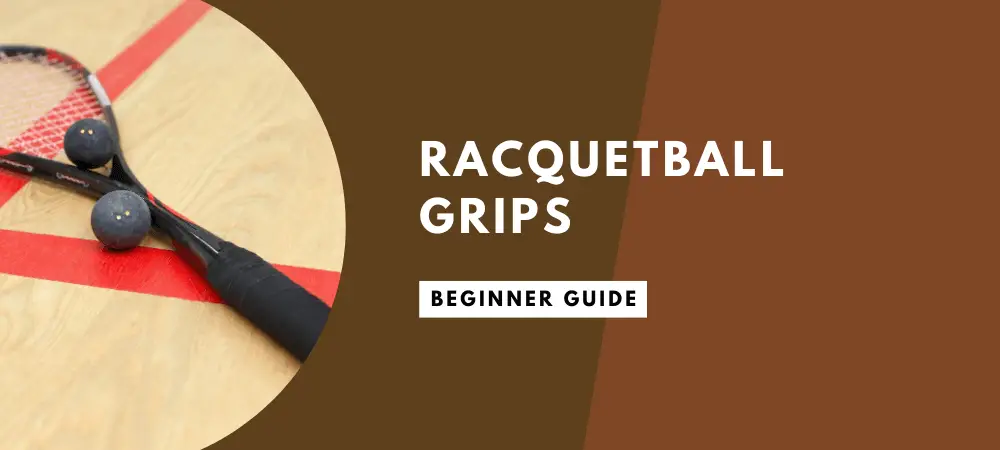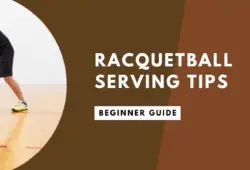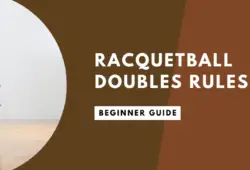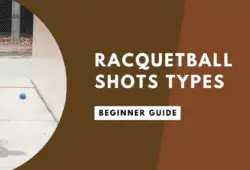Racquetball grips give better control over the shots you play. They can also influence the effectiveness and efficiency of your playing techniques.
The position of your fingers on the racquet, palm pressure, and the position of your wrist are the key parameters you should practice.
You can improve your grip with professional training and consistent practice.
Table of Contents
Importance of Racquetball Grips
Glove: The racquetball glove gives you the extra hold onto the racquet. It prevents slips and improves the precision of grip.
It can also absorb sweat and heat to keep your hands dry and cool.
Performance: Racquetball grips improve your on-court playing performance with accurate shot selection. It creates an optimum force on the ball at various contact points.
It improves the wrist strength to handle various types of shots like the kill shots and wide-angle shots from your opponent.
| # | Preview | Product | Rating | |
|---|---|---|---|---|
| 1 |
|
Penn Racquetballs (Pack of 12), Blue | Check today's price |
You can aim your shots at the accurate spots on the hitting surfaces like the walls and ceiling.
Precision: Playing the wide angled shots across the court and walls require precision. Your eyes will be focused on the opponent’s body movement and the change of grip.
They give you important input about the next probable shot he may plan. Your grip is the strength you have for countering his moves and shots.
By choosing the right grip, you can always have an edge over your opponent with precision shots.
Endurance: Racquetball grips give you the power of endurance to play longer rallies. You can hit the ball with maximum precision and force without stressing your hands’ arms too much.
Your wrist movement will be free to rotate at 360-degrees when the grip is optimum. So you don’t have to bend or move too much for angular and cross-court shots.
You can preserve your strength and stamina for a long time while playing.
Agility: Racquetball is a high-speed game which requires playing a vast range of shots within a short span of time. You need to be fast in making split-second shot selection decisions.
Experience in instant grip changes gives you the agility and accuracy. It comes only through the ability to grip the racquet in different positions and play your shots accurately.
Tightness: variation in the grip position and tightness can give you the flexibility of wrist rotation. You can handle the wrist extension torque in a much better way by enduring the ball impact on the racquet.
A good grip can also help you to aim your return shots at the desired angle within split seconds of receiving the ball.
Injury-Protection: Off-center impact of the ball on racquet can force you to apply stress over the elbow. It may result in sprains and injuries. By varying the grip tightness, it is possible to reduce the impact effects.
The probability of injury decreases substantially since the impact gets distributed evenly all over the contact surface.
Types of Racquetball Grips
1. Racquetball Forehand Grip
Grip-Position: You can get the simplest forehand grip holding the handle base with your thumb and index finger to form a V shape.
Your index finger points to the top flat side (right opposite to the handle) followed by the thumb, which is directed towards the forefinger. The remaining three fingers are aligned in order behind the thumb.
Shots: Using this grip you can play the pinch shots, passing shots, kill shots, and ceiling shots effectively.
The grip gives you extra power over the shots without having to exert your wrist and arm muscles too much.
Extension: Forehand grip gives you the freedom to extend your arm fully to avoid the negative effects of ball impact.
You can hit the ball with precision to make it land at any desired location on the wall and ceiling.
You can also force your opponent to go on the back-hand defensive shots and increase the chances of winning the rally.
Grip Tightness: You can increase the grip by shifting the V shape towards the right of the top flat side at various angles (you can consider a change by 15-degrees as an extended grip)
2. Racquetball Backhand Grip
Grip-Position: The V shape formed by the thumb and index finger will be towards the left of top flat side on the racquet front end.
The index finger is at the front followed by the thumb. The remaining three fingers will be in order behind the thumb.
Shots: You can play the drop shots which deceive your opponent to miss or mishit the ball out of court. You can also play the cross-court and angled shots to perfection.
The crosscourt kill shot is one of the most offensive shots you can play with the backhand grip.
Swing: Swing gives you the extra power to force your shots at variable speed and angles. Loose arm and flexible wrist with a backhand grip can give you the best position to play the swings.
Crosscourt kill shot can be executed to the best effect with a flat swing. Similarly, you can choose the other wing types by shifting the position of V Grip to the left of basic backhand grip.
3. Racquetball Continental Grip
Grip-Position: The continental grip is more like holding a hammer with your hand.
The four fingers will be wrapped around the handle while the thumb will be over the index finger, touching it at the middle.
The hold will be shared between the fingers and the palm.
Shots: You can play the power-packed kill shots using the continental grip. It is very effective when you want to hit the back wall, ceiling, and the extreme front spots on the side-walls.
You can handle the topspin shots with extra force.
Swings: Continental grip is highly recommended for creating the top swings during eh kill shots and drop shots.
Conclusion
You can practice the three types of grips to get the listed benefits during the training phase. Consist practice is the key to attaining perfection and sustaining it over the long term.




